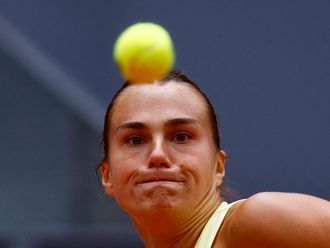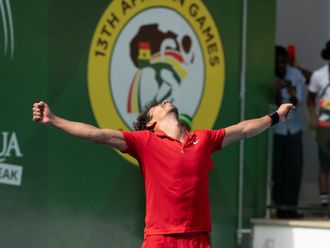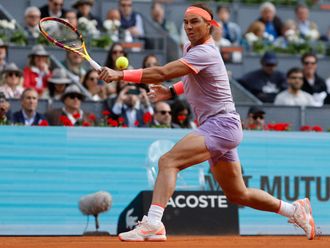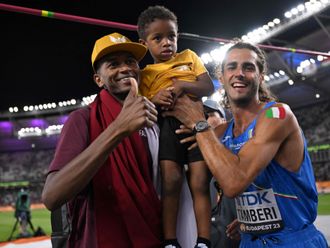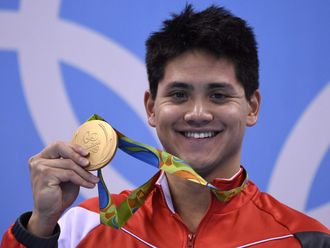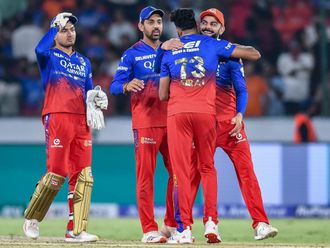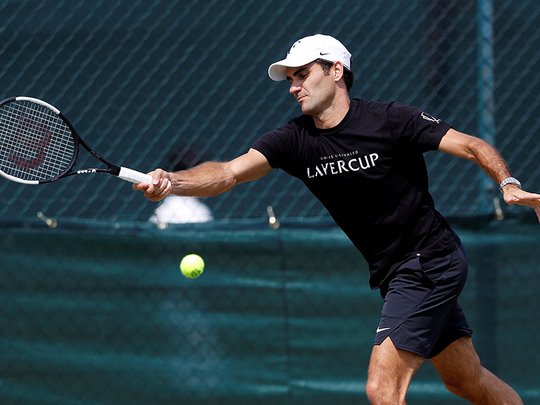
London: Defending champion Roger Federer will begin his quest for a record extending ninth Wimbledon title when he takes on Dusan Lajovic in first-round action on Monday.
The 36-year-old Swiss top seed and world No. 2, who defeated that Serbian player en route to winning last year’s title, could later face two dangerous Croatians in his half of the draw.
Sixteenth-seeded Borna Coric, who upset Federer to win last week’s Gerry Weber Open in Halle, Germany, is a potential fourth-round opponent, while third-seeded Marin Cilic, last year’s runner-up, looms as a possible threat in the semi-finals.
Spanish second seed and world No. 1 Rafael Nadal also learnt his first round opponent at Friday morning’s draw ceremony at the All England Club is Israel’s Dudi Sela.
The 32-year-old two-time champion, who has not reached the Wimbledon quarter-finals since 2011, has several potentially dangerous rivals in his section of the draw.
Germany’s Mischa Zverev, one of tennis’ few serve-and-volley practitioners, could be Nadal’s third-round opponent.
Should Nadal make it to the final eight of this grass-court Grand Slam, potential obstacles include big-hitting Argentine Juan Martin del Potro or Scottish two-time champion Andy Murray.
A berth in the semi-finals could mean a matchup against 12th-seeded Serbian Novak Djokovic, a three-time champion; big-hitting Australian Nick Kyrgios; or third-ranked German Alexander Zverev.
Ten years older, 10 years more battle-weary and injury-hardened and with a decade’s worth of extra silverware, Nadal returns to the scene of his most epic triumph against Roger Federer still believing he can reawaken his Wimbledon best.
Yet amid all the fond reminiscing about the anniversary of the 2008 final, with Nadal’s five-set victory still seen as the sport’s finest match, Spain’s world No. 1 was in no mood to stroll down memory lane at the All England Club on Saturday.
Certainly not when he has a third Wimbledon to win.
“Today, I see that (match as) like a long time ago,” Nadal told reporters, adding with a smile: “But the good thing is I still here. I am happy for that.” And happy that, after being crowned French Open champion for the 11th time at Roland Garros, he still feels he has a genuine shout at lifting the title again for the first time in eight years.
“I’m feeling good ... Expectations are always high. I am not here to play the tournament; I am here to try to have a good result,” the 32-year-old said, adamant that he can put behind him a string of more recent disappointments in London SW19.
Since his last appearance in the final in 2011, Nadal has made a series of unexpected early exits at the hands of unheralded players like Lukas Rosol, Steve Darcis and Dustin Brown and he also missed the 2016 Championships with injury.
Last year, he lost to Gilles Muller, succumbing 15-13 in the fifth set and again failing to make the quarter-finals. History has shown, though, that he if does get to the last-eight here- as he’s done five times — he always goes on to the final.
No final, of course, could top the 2008 classic which was celebrated at Wimbledon on Friday with a special screening of a new documentary ‘Strokes of Genius’ that focuses on that particular duel and the evolution of the rivalry between this year’s top two seeds.
“I am not thinking every day about that final. I am just focused on what I am doing today — but of course in that moment, that final was a very important step forward for me in my career,” reflected Nadal.
“I always have been very clear that it probably was one of the most emotional matches that I played in my career. To win here was one of my dreams. After losing two finals (both to Federer), that final created a big impact in my career.”
After winning his 17th Grand Slam title on the Paris clay, Nadal, as last year, spurned the chance of a grass court tournament warm-up, pulling out of Queen’s for the second straight year and opting to fine-tune his game in exhibition matches.
He sounded content enough with his build-up, though.
“It was not positive for me to not play Queen’s,” he said. “I was sad not to have the chance to be there. On the other hand, I didn’t go there because I’d played a lot on clay. So I was very happy.”


